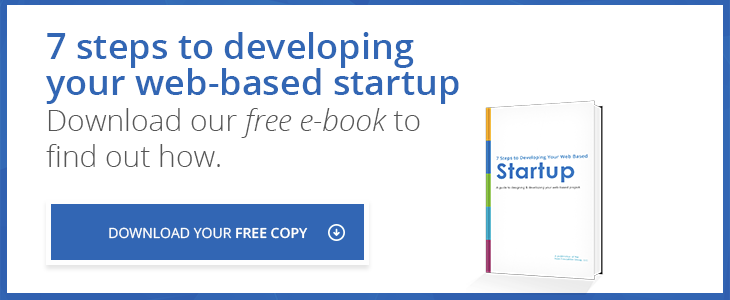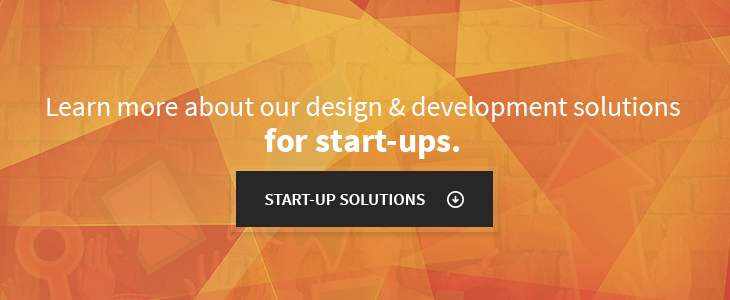Designing a website for subscription software is among the most challenging web development projects. In most cases, you have to build a website that simultaneously attracts visitors and convinces them to become subscribers, while at the same time offering the entirety of your powerful software on the back end.
Planning your SaaS web development project is no different from other types of planning: you need a map to get started. And once you break that map into its individual components, the challenge becomes a lot less daunting.
So here they are: the 6 stages of planning your SaaS web development project.
1. Determine Your Goals
The first step in any project is to define your goals, and SaaS web development is no different. In this case, determining your goals means determining the exact purpose of your website: Will it serve as a vehicle for your target audience to subscribe to your service, or as the platform on which your software actually runs?
Increasingly, the above question is a false dichotomy, as SaaS providers often need their website to accomplish both purposes.
Especially if you subscribe to the inbound marketing philosophy, your website will become the centerpiece of your marketing and lead generation efforts. But more likely than not, you also need your website to serve as the software itself, which means you'll need a powerful and reliable back end built in for existing subscribers. Understanding what functionality your website should exhibit is crucial before you get started.
2. Analyze Subscriber Needs
Next comes analyzing your current subscribers to understand their technical needs. How do they engage with your service? Is your software designed to be used at work computers, at home, or for busy executives on-the-go?
Again, the answer probably is somewhere in the middle; as we're sure you know, current and potential SaaS customers now engage with their software across a variety of screens. That means responsive design becomes necessary, enabling you to offer a flawless experience regardless of screen size.
But what if you already offer an app that enables your subscribers to get the most out of their mobile experience without visiting your website? In that case, responsive design is still important for marketing purposes, but you may want to orient your backend more toward desktop users.
We'll discuss later how exactly you can adjust for your subscriber needs; for now, the important step is to understand just what you need from your website from a technical standpoint.
3. Build In Upgrades
Now that you have a good idea of your strategic needs, it's time to begin thinking about the details your website should include. To optimize your SaaS solution, this is the point where you may want to think about building in the possibilities for subscribers to upgrade their services.
If you're like most SaaS providers, chances are the majority of your revenue does not come from first-time subscribers. Instead, it comes from loyal subscribers, who decide to expand their relationship with you either by expanding the range of functionality of their software or upgrading to the next level. Cross-selling and up-selling likely plays a significant role in your business model, because it offsets the churn you may experience. And because of that importance, it makes sense to begin planning for it early in your web development process.
Why think about this so early? Because you can build it into the structure of your website. In fact, research shows that the earlier you build cross-selling and up-selling opportunities into your strategy, website, and funnel, the more likely your subscribers will be to follow up with your offers.
4. Don't Forget the Content
With the structural and strategic considerations out of the way, it's time to begin thinking about just what content you will need to attract new subscribers and keep your current subscribers happy. Again, many SaaS providers looking to develop or update their website do not think about this until after the initial development process is finished. Moving it early into your planning process means you can design your website specifically to accommodate the types of content you're looking to utilize.
You may have case studies that you're looking to promote heavily on your front page. Testimonials may be an important part of your strategy to convince visitors to become trial users, while webinars are at the core of your strategy to keep subscribers engaged.
You may have a knowledge base available for subscribers, full of tutorials and helpful tips that help your customers get the most out of your software. Or perhaps you're a part of the increasing number of SaaS providers who use explainer videos as fun, unique ways to sell their software.
Whichever types of content you base your subscriber attraction and retention efforts around, you should know them and (ideally) have them available before you begin the design process. It's the only way to ensure that once the website is built, it will accommodate your content needs.
5. Choose Your Development Method
If you've arrived at this step, we have great news! Your pre-planning process is almost complete. Now, it's time to begin thinking about the way in which you actually want to tackle the project. In reality, that comes down to one of two major philosophies: agile vs. waterfall.
Web developers and project managers in all industries have long used waterfall as the traditional development method. The process is straightforward, as the developer establishes a linear timeline for each part of the project. After one part of your web development is done, the developer tackles the next part and continues to do so until the project is finished.
Traditionally, this waterfall development philosophy was attractive because of its linear nature, making it easy to understand and follow. But in the last few years, its shortfalls have become increasingly clear; put simply, there is no way to adjust if the developer runs behind schedule or goes over budget, and testing (the last step in the process) occurs only when the website is complete. That's why an alternative method, agile development, began to rise in popularity over the last few years.
Developers subscribing to the agile philosophy don't look at web development as a linear timeline. Instead, they break the project into multiple parts, which they tackle simultaneously with testing built into each individual step. The result is increased flexibility and testing abilities, though keeping an overview of the website's current development stage becomes a bit more difficult for clients.
6. Work with Your Developer
Choosing waterfall or agile as your preferred development method will influence which development firm you're likely to choose. But as you can probably imagine, that decision will influence every stage in your planning map.
For example, you may want to choose a developer who can help you with the first two steps by performing a site audit on your existing site. That developer may also work with you to understand the exact technical specifications of your website, helping you understand which platform would work for your needs.
Above all, your web developer should be able to help you in all of the above steps to make sure that your new SaaS website fulfills its goal in attracting new visitors and engaging current subscribers. Such a developer becomes your partner, ensuring that your web development planning and execution goes according to plan and your SaaS solution can thrive.




